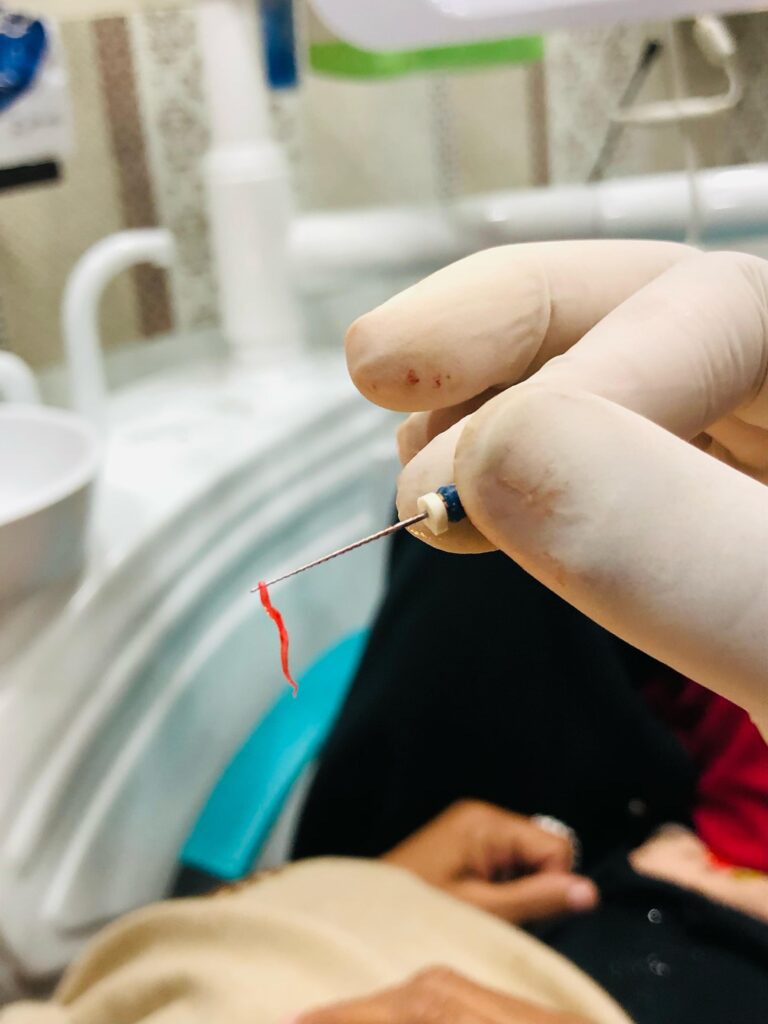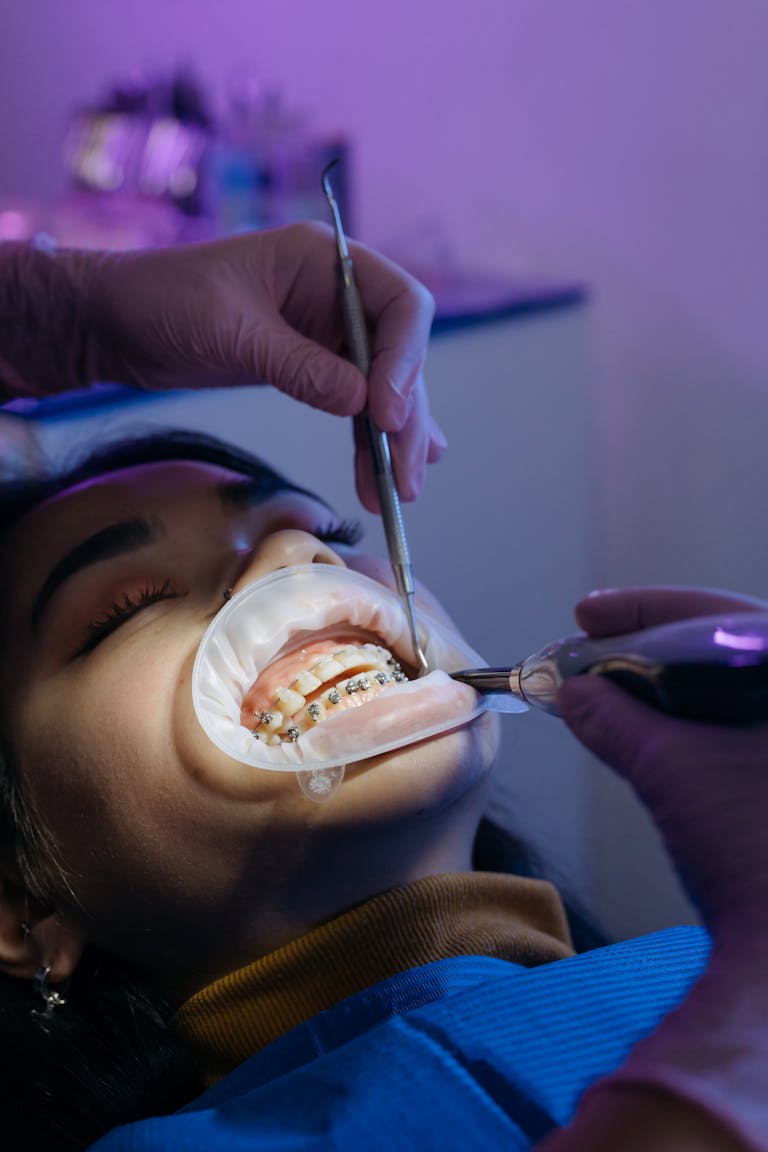In the United States, dental bonding for enamel loss would cost from $100 to $600 per tooth. The total cost will depend on your geographic area, the skill of the dentist providing the care and the amount of treatment needed.
Dental bonding is a very effective way to repair and replace enamel that has been worn away or chipped. Few insurance plans will pay for the full amount. Expect the higher end of that range when visiting bigger city clinics, such as those found in Los Angeles, and the lower end in much smaller towns.
The cost may increase if you require additional procedures, such as sculpting or color matching. Understanding what contributes to the overall cost will help you better prepare for treatment and discuss options with your dentist. The following sections explain each of these cost components in more detail.
What Is Dental Bonding?
Dental bonding is an effective cosmetic remedy that can be used to address enamel loss and many other common tooth imperfections. Dentists apply the tooth-colored composite resin to mask areas of wear, fill in chips, seal cracks, or close gaps.
Since the resin is tooth colored, the repairs are discreet. Most patients choose dental bonding because it is fast and cost-effective. It doesn’t need much removal of the natural tooth structure.
Bonding works for stains or teeth that look too short, making it a versatile pick for different dental needs.
Explaining the Bonding Process
The first step begins with the dentist preparing your tooth. Occasionally, a small portion of the tooth’s surface is roughened. Next, a conditioning liquid is applied to help the resin adhere.
The dentist will then mold the composite resin onto the tooth, shaping and smoothing it for a comfortable fit. Then, a special blue light hardens the resin in just a few minutes.
Final touches involve trimming and polishing so that the bonded tooth blends seamlessly with its neighbors. Typically, bonding requires 10 minutes to an hour per tooth, and it is completed in a single visit.
How Bonding Helps Enamel Loss
Bonding fills the spaces where enamel has worn down and is away, rebuilding the tooth’s form and function. Second, it protects the tooth from additional wear or sensitivity, reducing the chances of additional damage.
Bonding improves tooth color. Bonding is effective at concealing severe discoloration that accompanies enamel loss. The end product is a tooth that is more aesthetic and functional, sometimes requiring less drilling or less expense than alternative repairs.
Materials Used in Bonding
Today, the majority of dental bonding uses tooth-colored composite resins. These resins are carefully selected for their tooth color-matching ability and strength to endure everyday wear and tear.
This material bonds to teeth with powerful bonding agents that hold it in place. Compared to the materials used when bonding was first introduced, newer resins last longer, resist stains better, and appear more natural.
Bonding is not a permanent solution and may require replacements after five to ten years.
Why Choose Bonding for Enamel?

With minimal effort and cost, dental bonding is an excellent option for those seeking to restore enamel loss. Unlike crowns or veneers, bonding makes the process easier and conservative. There’s minimal or no drilling, and the natural tooth structure is preserved.
It’s ideal for minor touch ups, such as filling a small gap or concealing a small chip. Los Angeles’s busy people love that the bonding process is quick. It enables them to maximize their time out of the chair and in their daily lives.
Quick and Minimally Invasive
Bonding eliminates all of the extensive prep work that’s required for crowns or veneers. For these reasons, dentists usually do not have to remove a lot, if any, enamel. Some patients don’t even require a shot, as there is minimal discomfort involved.
The most common side effect that patients will experience is some temporary sensitivity immediately following the procedure. Now, you can do it all in a single visit to the office. This makes it the ideal option for those who are on the go.
A Cost-Effective First Step
At an average of $431 per tooth, bonding is much less expensive than the average veneer or crown. It’s a cost-effective first step. It’s a useful procedure for chips, cracks, or gaps that aren’t too serious in nature.
By repairing small imperfections in enamel as they arise, bonding can prevent greater damage—and expense—from developing down the road. It’s a cost-effective first step for the dentist and patient alike.
Natural-Looking Tooth Repair
Dentists choose a resin shade that fits perfectly with natural teeth. The rough texture and color blend perfectly, making chips or gaps much less noticeable. Patients are often left assured about the aesthetics of their dentition.
The composite can be molded or colored to closely resemble the natural tooth for each person.
My Take: When Bonding Shines
Bonding is great for small chips, gaps between teeth, and superficial discoloration. It makes an excellent choice for the patient who desires a minimally invasive, rapid smile enhancement with no extensive work required.
It’s reversible, too, so there’s not a huge risk if you decide you don’t like it after all. Keep in mind that the resin is susceptible to chipping or staining. To maintain its appearance, steer clear of abrasive foods and coffee!
Understanding Dental Bonding Costs
Dental bonding continues to be a proven solution to address cases of enamel loss, chips and cracks without breaking the bank. For anyone considering this treatment, understanding what makes up the cost can help you establish realistic expectations and avoid any surprises.
Here are a few different considerations—everything from your geographic location to your provider’s level of experience—that contribute to what you’ll actually end up paying. Understand that total costs often involve more than the primary procedure, like return visits or additional treatments. Clear and open talks with your dental team about each fee are key for making smart choices and planning ahead.
1. Average Cost Range Per Tooth
Dental bonding is the most cost-friendly cosmetic fix for serious enamel loss. National averages show a wide range: most people pay between $288 and $915 per tooth, with the average sitting at about $431. Small repairs, like filling in a small chip, can be as low as $100.
If your goal is to reshape or rebuild a tooth, you could pay closer to $400 per tooth. The total cost depends heavily on how many teeth require treatment. Bonding multiple teeth at once per visit will raise the overall cost compared to treating one tooth.
It’s not just the state that makes a difference. In large metropolitan areas, like Los Angeles or New York, increased overhead and demand usually result in higher dental bonding costs. For example, dental work can be significantly cheaper in smaller towns.
The cost will greatly depend on how the clinic is organized and the local economic situation. The extent of the repair needed further affects the cost. A single, shallow chip will be less expensive than filling gaps or repairing deep cracks.
2. How Enamel Loss Severity Impacts Price
The more severe the enamel loss, the more intensive treatment required. If you have mild enamel loss, this may only require a minor bond, but if the loss is deep or wide, this will take more time and material.
Your dentist may have to replace part or all of the tooth, for which they may need additional expertise. This procedure would be a multi-step process. If your enamel loss is extensive, your dentist may instead suggest other treatment options.
These alternatives, like crowns or veneers, usually have a costlier price point than basic bonding. An extensive dental checkup is essential to map out the best procedure. Your dentist should be looking at more than the area needing bonding.
They will consider your bite, the strength of your teeth, and the possibility of future damage. More complicated cases, such as repairing a tooth that’s been chipped and ground down, increase the price. For all of the above reasons, no two estimates are the same.
3. Material Choices and Your Bill
While all dental bonding is done in composite resin, not all resins are created equal. Other clinics may have access to premium blends that last longer or look more natural, but these are more expensive.
You might pay less for lower-cost materials that meet basic needs, but they won’t match tooth color as well or endure as long. Patients do have choices, though depending on aesthetics, how long they want the repair to last, and their budget.
For example, some patients may prefer the most natural-looking finish possible, while others may prioritize budget above all else. The key is to discuss the available options with your dentist, including the benefits and drawbacks of each, to establish what is appropriate for your situation.
A more expensive resin improves the appearance and texture of your front teeth. At the same time, a quick and easy repair is more than enough for the molars.
4. Dentist’s Experience Matters
A dentist’s experience can significantly impact the quality and cost of bonding. An experienced dentist might cost more, as they will have years of training and a history of successful outcomes. This additional investment usually comes with more value.
Experienced providers are able to combine resin in such a way that it perfectly matches the tooth. They sculpt repairs to near-perfection and detect occlusal issues before they become problems. You’re not just paying for a skilled hand — when you choose an experienced dentist, you benefit from their advice on aftercare and long-term upkeep.
This often results in a bonding that lasts the expected five to ten years, and often more with diligent care.
5. Location: City vs. Rural Costs
Where you live makes a difference. In urban areas, practices have to pay more in rent, employee salaries, and insurance costs, reflected in the price tag. Lower overhead in rural areas might lead to lower costs, but with less availability.
In rural areas, some small-town clinics have lower prices to attract patients, but others may be higher because of reduced local competition. Comparing costs between urban centers and rural communities will allow you to find the best fit for your needs and budget.
6. Additional Procedure Fees (X-rays, etc.)
Dental bonding usually requires additional work beyond the primary repair. Diagnostic procedures such as x-rays, exams, and consultation fees make the entire procedure more expensive. These additional procedure fees may add another $25 to $150 or more at some clinics.
The cost of all procedures isn’t always posted in advance, so it’s worth asking about each and every potential charge before scheduling an appointment. Understanding every cost ensures no surprises come up. A reputable dental practice will be upfront about costs for every procedure.
8. Comparing Enamel Bonding Quotes
Requesting estimates from at least three other dental offices is a good idea. Costs tend to vary due to your area, the experience of your dentist, and sometimes the material used. Comparing more than just the price, what’s included in care—such as aftercare or follow-up appointments—provides a better picture.
Other clinics might have lower prices, but they skimp on quality materials or neglect necessary follow-up care. Some will charge more, but offer additions such as custom shading or more durable resin.
Considering both the cost and quality of service ensures you’ll be able to make the best decision for your teeth—and your wallet.
Cost Differences Across the US
Dental bonding for lost enamel is not a fixed-cost service across the US. The cost per implant can vary from $100 to $500. Your overall cost will depend on factors such as where you live, how many teeth need treatment, and how complicated the procedure is.
When cared for properly, dental bonding can last anywhere from 3 to 10 years. Behaviors such as teeth grinding or nail biting can greatly reduce its longevity.
Why Prices Vary Geographically
Your geographic location plays an outsized role in the care you receive. In large metropolitan areas with a high cost of living, such as San Francisco or New York City, dentists tend to have higher prices.
Rent, staff salaries, and supply costs are much more expensive, so those costs get built into the cost of a dental procedure. In areas where there is high demand from many individuals seeking cosmetic, non-essential dental procedures, prices can increase in response to demand.
Next is the competition on the local level. If you live in a small town with a high concentration of dentists, the prices might be lower. With a national market, clinics will compete for patients, forcing costs down.
When you start to explore bonding, it’s worth your time to consider all these community-specific variables.
General Trends: Coasts vs. Midwest
As seen in coastal states such as California and the Northeast, dental bonding is generally more expensive in coastal regions. On average, look to spend about $400 or $500 per tooth.
In the Midwest, you’ll get prices more in the range of $100 or $200. All of these discrepancies arise out of local economies and the value that the local populace places on cosmetic repairs.
Newer materials or several services selected by people in urban centers can raise costs.
Urban Centers vs. Smaller Towns
Dental bonding in an urban center would typically be more expensive than in a rural area. Urban dentists have high overhead business expenses.
In smaller communities, practices can make it more affordable with prices as low as less than $100 per tooth. Evaluating options in your area can ensure you get a good deal without compromising quality.
Does Insurance Cover Bonding?

Dental insurance for bonding isn’t universal. With most plans in the U.S. Considering dental bonding a cosmetic repair, coverage is usually quite uncommon. If your enamel loss is due to decay or trauma, however, many insurance policies will cover at least part of the cost.
Understanding how your plan views bonding is crucial before making any travel plans. Each insurer and each plan is going to have their own interpretation. As with any procedure, it’s best to get the details straight from your provider.
Cosmetic vs. Restorative Views
Insurance views bonding as cosmetic, and insurance will often deny coverage for bonding. For example, cosmetic bonding to repair a chipped tooth for cosmetic purposes would typically be excluded.
Restorative bonding, like fixing a tooth due to an injury or cavity, may cover benefits at times. This provision is important, as it directly affects how much you may have to spend out-of-pocket. Call your dental office to find out what kind of bonding you require. They can help you find out if your insurance is likely to cover bonding.
Navigating Your Dental Plan
Take the time to understand your specific plan language before making an appointment for treatment. Watch out for terms such as “coverage limits,” “exclusions,” and “pre-authorization.
Go the extra mile and call your insurer directly to inquire about your individual case. Whether there’s a dollar cap and/or limit on the number of teeth known upfront can help avoid raising hopes for unrealistic outcomes. Taking this step can help you avoid surprise bills.
Questions to Ask Your Insurer
Ask your provider: Does my plan cover bonding for enamel loss? Are there annual maximums or co-payment requirements?
If bonding requires pre-approval or other documentation from my dentist, will you inform me of that in advance? How long will the claims process take? These are great questions to determine pricing and payment schedules.
Out-of-Pocket Expense Reality
In contrast, dental bonding typically costs between $100–$500 per tooth. Everyone pays out of pocket. The reality is that most people do not go through insurance, particularly for cosmetic repairs.
Planning in advance is easier, but others have utilized medical credit cards to make payments over time. It’s a good idea to get an estimate of total out-of-pocket expenses from your dentist in advance.
Paying for Your Dental Bonding

Paying for your dental bonding for enamel loss can be overwhelming. In the U.S., most prices for dental work fall between $100 and $500 per tooth. This cost will vary based on the extent of work needed and how many teeth need bonding.
Many dental clinics—even in cities such as Los Angeles—allow for flexible payment options. By streamlining the process, they take the stress out of managing your dental costs. It’s always a good idea to inquire about payment options or financing options before beginning any dental work.
This strategy saves you from surprise fees. Doing so becomes especially vital if you are getting several teeth treated at once, or if you plan to make dental bonding a long-term routine.
Exploring Payment Plans
Most dental practices will arrange a payment plan that allows you to make payments over time. These plans allow you to pay for your care in installments, making even a larger bill much more manageable.
Most of these clinics partner with outside lenders or provide financing options in-house. It’s important to always ask about interest rates. Learn how many payments you have to make, since some plans are interest-free if paid on time, but others can be pricier.
Review the agreement to understand what you’re committing to, including costs and payment terms.
Using Health Savings Accounts (HSAs)
Using Health Saving Accounts (HSAs) can be beneficial if you have one. You can use it to pay for dental bonding, which is a smart way to pay for health expenses with pre-tax dollars, stretching your dollars further.
Confirm that your bonding will be HSA-eligible before you schedule. Keep a close eye on your balance. That way, you can be sure your HSA will cover your costs in full or in part.
Third-Party Financing Options
Private companies such as CareCredit offer patients loans or lines of credit specifically for medical and dental procedures. These can turn large bills into payment plans, but be sure to look for the interest rate and terms.
Your monthly payments must be affordable, so be sure to compare offers before selecting a loan.
Bonding Compared to Alternatives
Dental bonding is the most efficient and affordable option for repairing enamel loss, however there are alternative options available. At our cosmetic dentist office in Los Angeles we frequently get asked how bonding stacks up against veneers and crowns. Each remedy has distinct benefits and downsides.
Choosing the best option for you will depend on your individual dental needs, financial situation, and oral health objectives. It’s a good idea to consult with a dentist experienced in these matters to help you understand what will work best for your teeth.
Bonding vs. Veneers: Cost & Longevity
Bonding vs. Veneers cost and lifespan Bonding is more affordable than veneers with the national average being around $431 per tooth. Veneers are more expensive than bonding, running from $925 to $2,500 per tooth.
Bonding is typically completed in one appointment, whereas veneers require two or three visits. Veneers provide a longer lifespan—up to 15 years or longer—where bonding can last only 3 to 10 years.
Bonding is a good option for small chips or cracks, while veneers create more dramatic changes in tooth shape or color. While veneers are more stain-resistant, bonding is susceptible to staining due to habits like smoking and drinking coffee.
Bonding requires less maintenance initially, but may require more touch-ups in the long run.
Bonding vs. Crowns: When Necessary?
Bonding vs. Crowns Bonding is appropriate for small repairs. Crowns are typically used when a tooth is severely damaged or decayed. A crown typically runs anywhere from $1,000 to $3,500 per tooth.
In addition, the procedure is more invasive as it involves capping the entire tooth. While crowns do last longer and provide greater strength, bonding has less impact on the tooth.
Whether there is extensive damage or not determines which one is used. Your dentist will consider the overall health of your tooth and the extent of repair to guide you in making the right choice.
Making the Right Choice
Consider your priorities, your available funding, and the expected duration of the desired results. Consider long-term maintenance, as well as aesthetics in terms of both how your teeth will look and feel.
Getting multiple opinions from different dentists can ensure that you receive the best possible advice. We know costs are important, but so is getting strong results and your level of comfort with the process.
Caring for Bonded Teeth

Proper care of bonded teeth is the best way to ensure your dental restorations last and continue to look great. Bonding can repair any loss of enamel; however, it does require routine maintenance and a few adjustments to everyday lifestyle.
Even the vast majority of people across the U.S. Say they can easily incorporate these care tips into their daily lives. Just a bit of care will help ensure your repair lasts and your smile remains bright and healthy.
Extending Your Bonding’s Lifespan
Easy practices will extend your bonding’s life. Expect your dental bonding to last at least 5 years. Be sure to brush at least twice daily with a soft toothbrush, and use extra care around the bonded area.
Aggressive brushes may scratch the composite resin’s surface. Use non-abrasive toothpaste—avoid brands with activated charcoal or gritty whitening ingredients. Look for alcohol-free mouthwash, as ethanol may weaken the bonding.
Routine dental appointments are essential, both for regular cleanings and for catching small problems before they become big ones. Chipping can occur if you bite into extremely hard foods such as nuts, pretzels, or hard candy, so avoid these.
If you do eat or drink something acidic or sweet, rinse your mouth out with water afterward.
Potential Repair or Replacement Costs
If bonded teeth chip or break, the cost of repair can be considerable. In urban centers, smaller fixes can run between $100 and $400 per tooth. The cost of full replacement is greater.
Preventative dental care is crucial. Catching issues while they’re small prevents expensive procedures. On average, bonding lasts three to ten years, depending on your maintenance and daily activities.
If you’re serious about maintaining your smile, budgeting for future touchups is a smart thing to do.
Habits to Avoid Post-Bonding
Don’t bite your nails, chew on pens, or use your teeth to open packages or bottles. These habits place unnecessary strain on bonded teeth and may lead to chipping.
Avoid staining foods and beverages—coffee, tea, red wine—for a minimum of 48 hours. Avoid whitening bonded teeth, as only natural enamel can be whitened with products.
Eating a nutritious, well-rounded diet is the best way to promote strong, healthy teeth.
Conclusion
Dental bonding is a great, uncomplicated solution for patients experiencing enamel loss. It allows them to get the smile of their dreams without emptying their bank account. Prices vary widely around the country, but the average person pays between $300 and $600 per tooth. On some plans it’s covered, but others it might not be, so calling ahead to your provider clarifies things.
People who have bonding done say it’s easy to maintain and it looks great next to your other teeth. It can be very effective for small chips or spots. For larger repairs, crowns or veneers may be more appropriate. Have other questions regarding the cost in your locality, or looking to find out if bonding will be a good fit for your teeth? Speak with your community dentist—they’ll be able to map out your options and work with you to determine what’s best for your needs.
Frequently Asked Questions
How much does dental bonding for enamel loss cost in Los Angeles?
How much does dental bonding for enamel loss cost in Los Angeles? Factors that affect cost include the dentist’s experience with dental bonding, the location of the tooth, and the extent of the enamel loss.
Is dental bonding covered by dental insurance?
Most dental insurance providers consider bonding done for cosmetic purposes elective, and therefore they likely won’t cover it. When bonding is medically necessary, partial coverage may be available. Is dental bonding covered by dental insurance?
How long does dental bonding last on enamel?
How long does dental bonding last on enamel? With proper care — such as avoiding hard foods and the use of regular dental checkups — you can improve the longevity of dental bonding.
What are the main benefits of dental bonding for enamel loss?
It can be used to restore overall tooth shape, protect sensitive spots, and improve the aesthetic appearance. It’s a fast, conservative procedure that can usually be done in a single appointment.
Are there cheaper alternatives to dental bonding for enamel loss?
Dental fillings and fluoride treatments can be more affordable. They cannot achieve the same cosmetic results as bonding. Your dentist will be able to help you decide which option is right for you.
Can I eat normally after getting dental bonding?
So, can you eat normally after getting dental bonding? Don’t chew on hard objects or eat ice, as this risks chipping or harming the bonded area.
How do I care for teeth after dental bonding?
Daily brushing and flossing, cutting back on staining foods and drinks, and regular dental visits will help maintain your bonding. With proper oral hygiene, your bonded teeth will stay beautiful for years to come.





